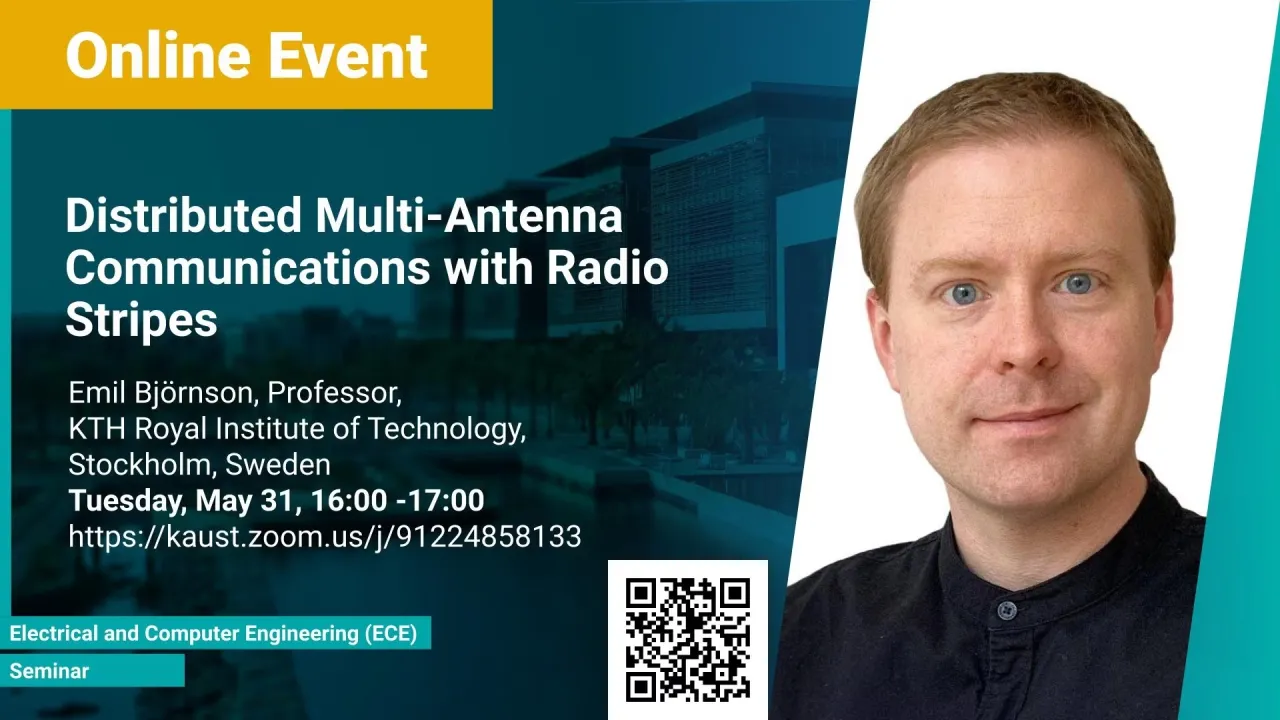
Distributed Multi-Antenna Communications with Radio Stripes
- Prof. Emil Björnson, KTH Royal Institute of Technology, Stockholm, Sweden
KAUST
In this talk, we will consider an alternative approach for future networks: serve the users by antennas that are distributed over the coverage area. By shifting from a world where base stations are surrounded by users, to a world where each user is surrounded by antennas, we can deliver almost uniformly good data rates wherever the user is. This concept has recently been called Cell-Free Massive MIMO. A core practical challenge is to deploy such a distributed MIMO array affordably. One potential approach is to use radio stripes, which are cables with integrated antennas. We will take a close look at how these can be implemented and recent results on how communications algorithms can be designed to exploit their special characteristics.
Overview
Abstract
The key technology in our new 5G networks is Massive MIMO. This means that the base station consists of arrays with 32 or 64 antenna-integrated radios, which are utilized to focus each signal at its desired receiving user and transmit to multiple users simultaneously. This is just the beginning of the MIMO (multiple-input, multiple-output) story. As the data traffic increases, we can continue adding more antennas to the base station arrays to support more users, but the users will always observe large data rate variations depending on their location in the cell due to distance-based pathloss and inter-cell interference.
In this talk, we will consider an alternative approach for future networks: serve the users by antennas that are distributed over the coverage area. By shifting from a world where base stations are surrounded by users, to a world where each user is surrounded by antennas, we can deliver almost uniformly good data rates wherever the user is. This concept has recently been called Cell-Free Massive MIMO. A core practical challenge is to deploy such a distributed MIMO array affordably. One potential approach is to use radio stripes, which are cables with integrated antennas. We will take a close look at how these can be implemented and recent results on how communications algorithms can be designed to exploit their special characteristics.
Brief Biography
Emil Björnson is a Professor of Wireless Communication at the KTH Royal Institute of Technology, Stockholm, Sweden. He is an IEEE Fellow, Digital Futures Fellow, and Wallenberg Academy Fellow. He has a podcast and YouTube channel called Wireless Future. His research focuses on multi-antenna, communications, and radio resource management, using methods from communication theory, signal processing, and machine learning. He has authored three textbooks and has published a large amount of simulation code.
He has received the 2018 and 2022 IEEE Marconi Prize Paper Awards in Wireless Communications, the 2019 EURASIP Early Career Award, the 2019 IEEE Communications Society Fred W. Ellersick Prize, the 2019 IEEE Signal Processing Magazine Best Column Award, the 2020 Pierre-Simon Laplace Early Career Technical Achievement Award, the 2020 CTTC Early Achievement Award, and the 2021 IEEE ComSoc RCC Early Achievement Award. He also received six Best Paper Awards at the conferences.